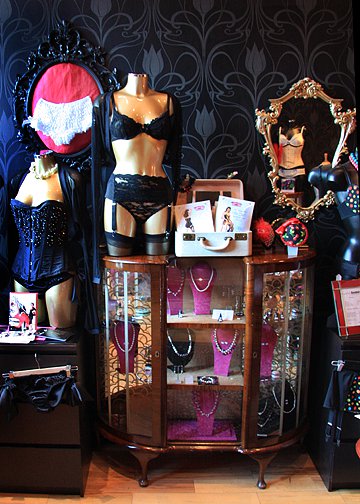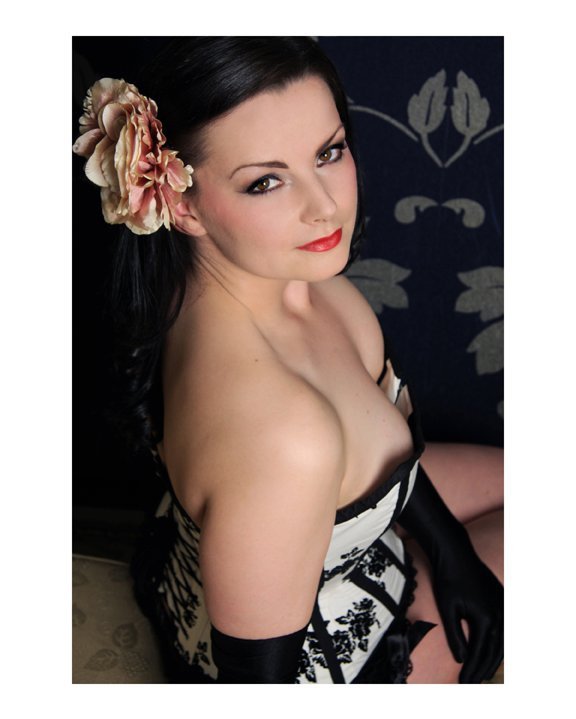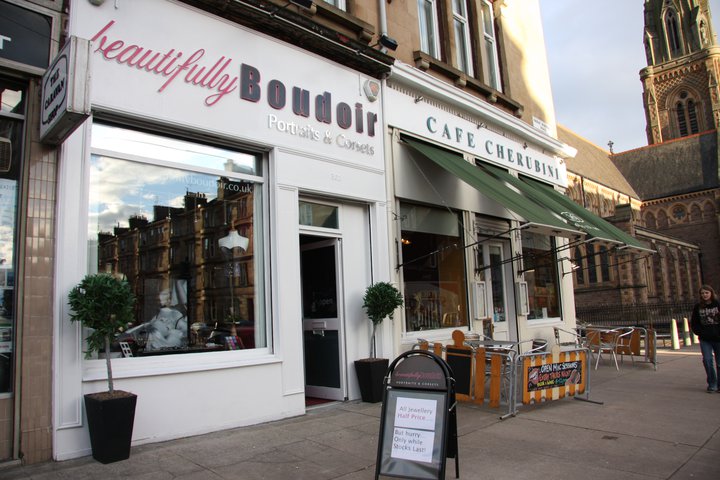Elegantly Pastied – A Brief History of Striptease & the Emergence of the Nipple Pastie!
Pasties, and their whimsical cousin the nipple tassel, are the decorative body accessory du jour. Usually associated with burlesque performers, they've recently been spotted on the likes of Miley Cyrus, Rhianna and Nicki Minaj, marking an explosion in their popularity since they were originally brought back into mainstream consciousness by likes of the lovely Dita Von Teese in the 90’s. But don’t be fooled – they’ve been around a lot longer than that, and have a history intertwined with art, censorship, moral outrage and cultural paradigm shifts…read on to discover more about the history of the humble pastie.
Most people with an interest in cabaret history will know that burlesque wasn't always about the art of striptease – in fact its roots are more in a British music hall tradition of comedy, satire and song. The fact that it was often performed by young, attractive women wearing costumes considered at the time to be revealing, telling ribald jokes and reciting material that was somewhat sexual in nature, gave the shows a thrilling edge in an otherwise repressed Victorian society.
The transition to a striptease element did not come for some time, with various dancers claiming to have invented the art with stories ranging from a snapped strap onstage to a performer who absently started changing out of her costume in view of the audience as she finished her act!
While it’s hard to put a finger on when exactly the pastie became part of the history of burlesque costuming, we can look as far back as the late 19th century to see photographs of dancers decked in exotic garments that resemble the smaller, modern-day equivalent. During this period a popular fascination had emerged with the study of ‘Orientalism’ – a largely imagined (and today recognised as being a fairly racist and colonialist) view of the history, traditions and mysteries of the East, which included Middle Eastern, Asian, and Egyptian culture.
Of course, not all of this interest was entirely academic, and titillating tales of harem girls, concubines and courtesans hinted tantalisingly at a licentious libertinism found in the far-flung corners of the world – feverishly gripping the imagination of a society characterised by its expectation of sexual constraint and moral forbearance.
Of course, various enterprising individuals realised quickly that sex sells, and hit on a way to monetise this fascination with a series of exhibitions at World Fairs, showcasing performances by exotic-looking women displaying what was known as ‘muscle dancing’- an art form similar to belly dancing, which would have been an unthinkable show of eroticism were it not rendered innocuous by its presentation as an educational exhibit.
A distinct trend was emerging: dancers, presented as Eastern Princesses but frequently locals girls from Vaudeville backgrounds, would shimmy and shake their bodies onstage in dances such as ‘Salome’s Dance of the Seven Veils’, ‘Arabian Nights’, and ‘Temple Dance of the Priestess’ at shows with names such as the ‘Algerian Village’ or the ‘Persian Palace’.
The most famous dancer in this style is undoubtedly the notorious Mata Hari, but other performers such as Little Egypt and Loie Fuller were also part of the movement. These dancers would wear risque costumes and remove items of clothing, but were rarely if ever fully nude, their modesty being preserved by bodysuits, elaborately jewelled bikinis and metal discs covering their breasts.
However, while this was happening in respectable establishments across Europe and America, the circus sideshow tradition had picked up on it and were presenting their own ‘educational exhibits’ in ten-in-one shows across the United States where dancers would undulate in costumes which left little to the imagination, to the delight of male audiences. Over time the pretence of these sensual displays being for purely educational purposes was dropped, the themes became looser, and the Danse du Ventre of the Victorian era made way for the ‘hoochie cootch’, where a fully nude finale was common if, when and where it could be gotten away with.
However, when the art of the striptease started making its way out of the sideshows and into Vaudeville shows in cities across America, so the sense of moral alarm grew and new nudity laws were enforced in venues wanting to showcase ‘burlesque revues’; nights which featured comedy, music, and beautiful, scantily-clad women.
These shows, such as the famous Ziegfeld Follies and the Minsky Brothers’ National Winter Garden, were no longer the male-centred spit-and-sawdust tents of the travelling sideshow fairs, but theatrical venues which attracted both men and women of all classes. The move from lowbrow to highbrow attracted the attention of police and politicians, who would wage a moral crusade on the nascent industry.
Burlesque clubs were regularly raided, and dancers were often arrested if they were deemed to be showing too much skin. Here the pastie became a weapon in the fightback against the censors, and allowed dancers to perform nearly-nude with the addition of a g-string to cover their modesty. Different states had different laws, and burlesque dancers were particularly ingenious in getting around them – attaching a piece of string around the pasties in a halter neck style was enough to get them classified as a bikini, and is still known as wearing them ‘Boston Style’ due to the particularly strict laws in that state!
The pasties became an iconic image of the burlesque dancer. The performer Carrie Finnell is credited with inventing the nipple tassel – a woman of ample bosomage, her shtick as a ‘mammary manipulator’ saw her shaking her ‘educated bosom’ to spin her tassels up and down, left and right – a gimmick that has become so popular that it’s synonymous with the image of the bump-and-grind burlesque performer now.
Striptease enjoyed a roaring golden age of prosperity and notoriety, its stars being celebrities of the day with tabloids reporting on their love lives, extravagant lifestyles, and their run-ins with the establishment.
Burlesque shows were a main staple of American entertainment from the 20’s to the 50’s – however its decline in the mid-1960s, when go-go dancing and miniskirts replaced the ubiquitous pasties and a g-string, marked the end of an era until the recent burlesque revival.
However, the pastie lived on, albeit in slightly less recognisable format – marketed as beachwear or a tanning aid with an occasional catwalk appearance under sheer garments.
However, like anything associated with the taboo and forbidden aspects of a woman’s body, the allure of the pastie has never quite gone away, and can be seen in fetish photography and fashion pictures from the 70’s to the present day, whether in the form of the jewelled and sparkly sets that go all the way back to the origins of the garment, or the instantly recognised punk aesthetic of strips of black tape crossed over the nipples.
These days burlesque dancers still wear pasties and tassels not just to circumvent venue licensing issues – a special permit is required to host events where nudity occurs – but also for the rich history and tradition they represent.
In fashion, lingerie trends are allowing women who love the look of pasties to buy them in all sorts of shapes, colours and designs. Whether they are worn to clubs or under sheer garment, or just a bit of boudoir naughtiness, we love pasties, especially when matched with open cup and quarter cup bras!
Here’s the PP selection – which will you choose?





